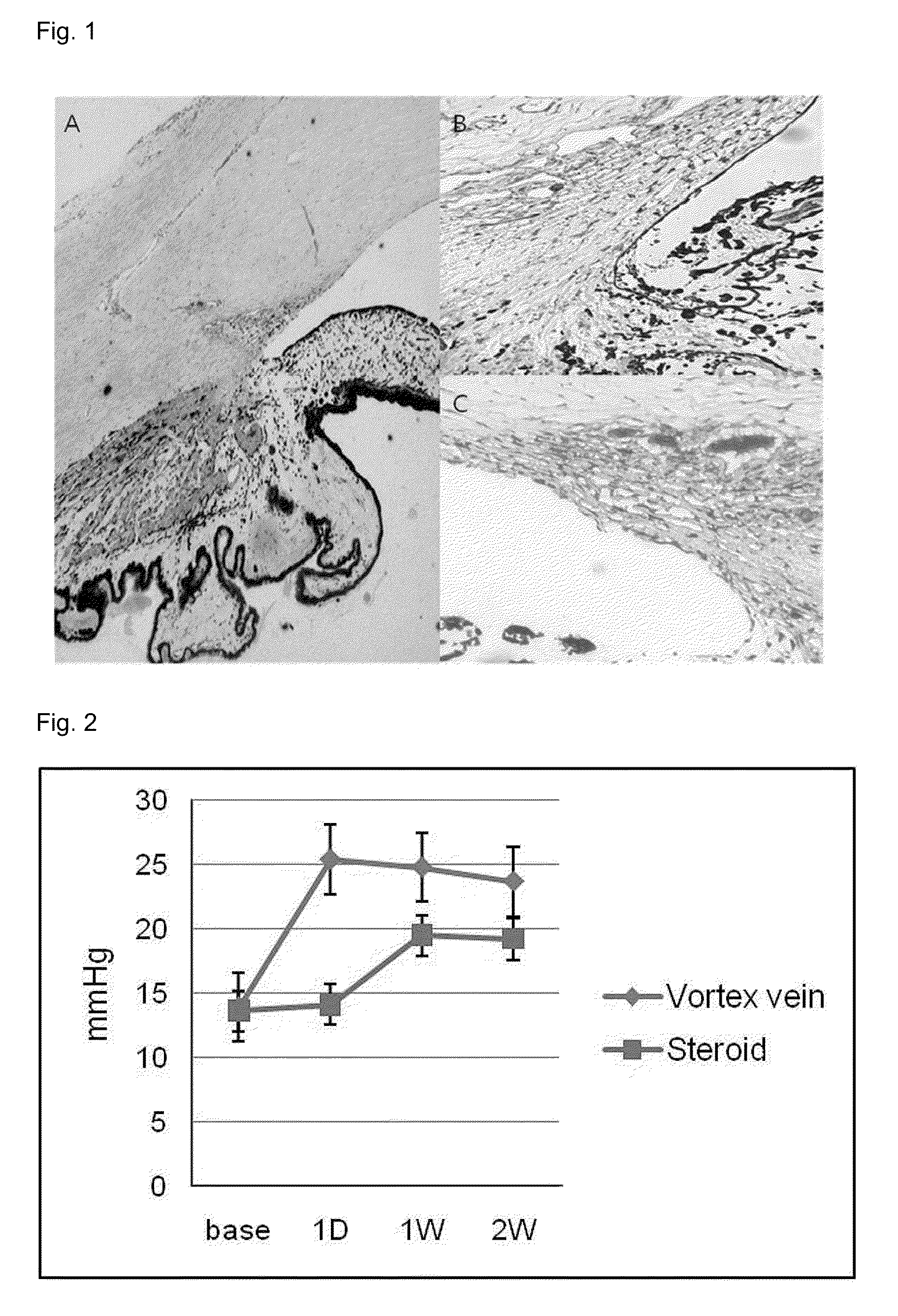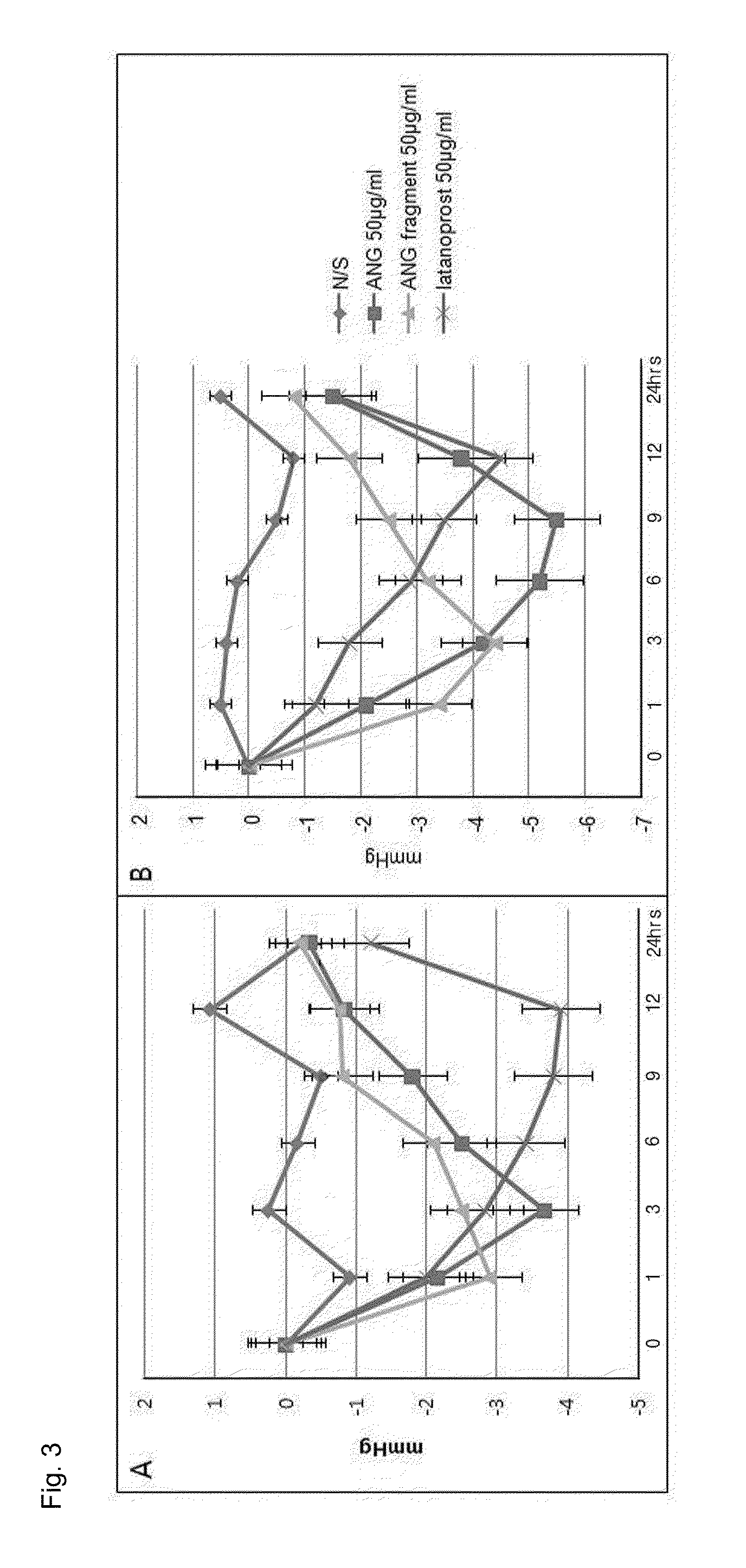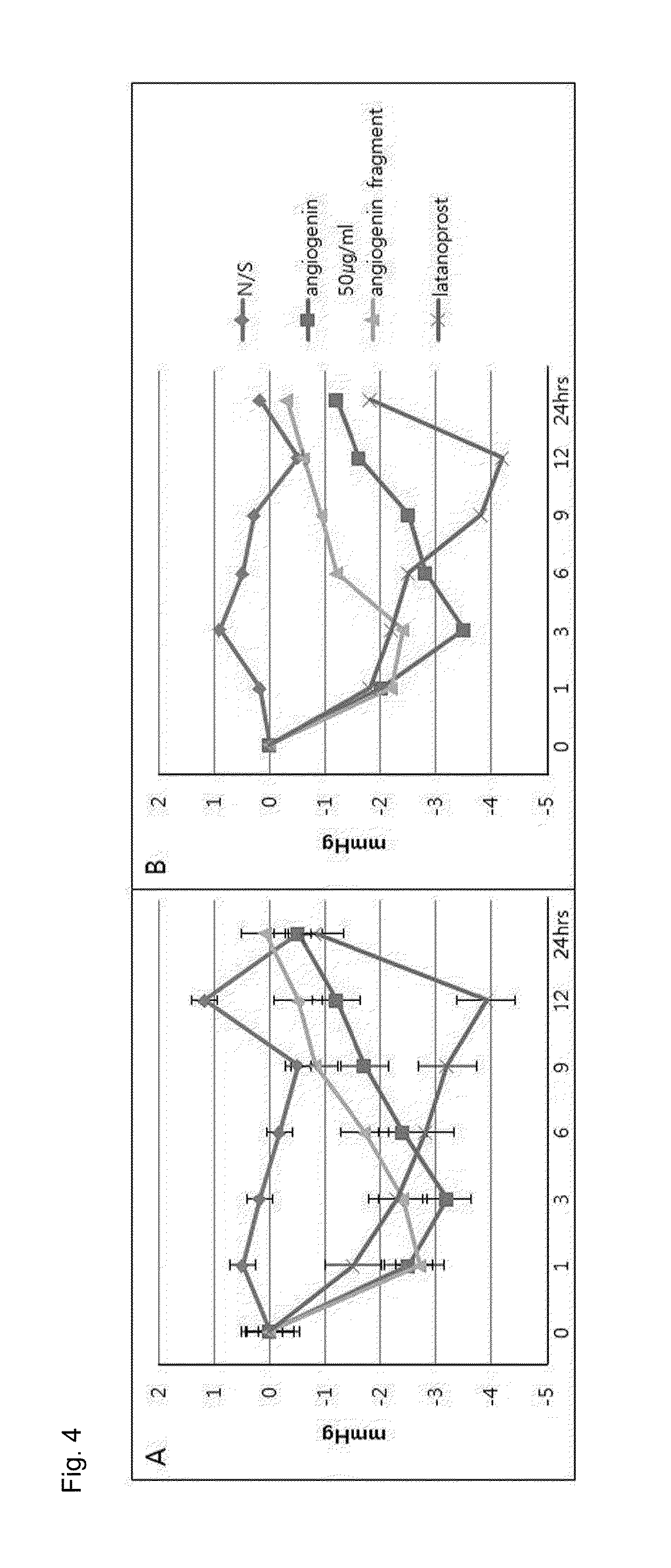Novel use of angiogenin
angiogenin and angiogenin technology, applied in the field of new angiogenin use, can solve the problems of optic nerve injury in glaucoma patients, increased intraocular pressure aqueous humor outflow is known as a major risk factor of glaucoma, so as to suppress corneal neoangiogenesis, reduce intraocular pressure, and prevent glaucoma.
- Summary
- Abstract
- Description
- Claims
- Application Information
AI Technical Summary
Benefits of technology
Problems solved by technology
Method used
Image
Examples
example 1
Immunohistochemical Staining of Cadaveric Ocular Anterior Chamber Angle
[0077]Eyeballs donated for research purposes were pre-fixed in a 4% paraformaldehyde solution for 6 hours, and then, a tissue thereof was cut to be perpendicular to cornea, including cornea, limbus, and conjunctival, and the obtained tissue was fixed at room temperature for 6 hours. The fixed tissue was rapidly frozen and then a frozen tissue section was prepared and attached to slide glass. Thereafter, for immunohistochemical staining, the tissue section was washed with distilled water for 10 minutes and then, treated with 1% hydrogen peroxide solution for 20 minutes and then, washed three times with 0.02M phosphate buffer solution and treated with normal horse serum for 30 minutes. Then, primary antibody of angiogenin and Indoleamine 2,3-dioxygenase (IDO) were applied thereto for 48 hours, and then the result tissue were washed with PBS, and then, secondary antibody was applied thereto at room temperature for 1...
example 2
Identification of Intraocular Pressure Change Due to Angiogenin Instillation in Glaucoma Rat Model
[0081](1) Preparation of Test Glaucoma Model
[0082]Male white rats were used to prepare an episcleral venous ablation glaucoma model. The rat was anesthetized and a limbus periphery was divided into four portions, each of which was then subjected to 2 mm dissection at an interval of 90 degrees, and then, two radial conjunctival excisions were performed on upper dissection periphery. Tissue was pushed backward to make extra ocular muscle to be exposed and then, two back-side episcleral veins near superior rectus muscle and one ear-side episcleral vein near lateral rectus muscle were separated. Episcleral vein is distinguishable because it is located deeper than extra ocular muscle, has relatively low fluidity and a relatively large diameter, contains darker blood in vessel, and is connected to peripheral venous plexus. After surgical isolation of vein, the vein was lifted up by using 3 mm...
example 3
NO Concentration Change in Normal and Glaucoma Rat Model Aqueous Humor after Angiogenin Instillation
[0105]Normal rat models were divided into 4 groups, each group consisting of 6 rats, that is, 12 eyes, and at 8 AM and 8 PM, each group was instilled with angiogenin 50 μg / ml, angiogenin fragment 50 μg / ml, and latanoprost 50 μg / ml, and 1, 3, and 6 hours after instillation, 15 to 20 μl of aqueous humor was extracted from two rats, that is, 4 eyes for each group. For the extraction of aqueous humor, first, rats were anesthetized, and then, corneal dissection was performed in a direction from at 9 o'clock outside each eye toward microkeratome, and then, a capillary tube was brought into contact through a dissection wound to absorb aqueous humor, which was then moved to an eppendroff tube and frozen-preserved at a temperature of −70 degrees. Thereafter, nitric oxide (NO) concentration in aqueous humor was measured by Griess assay (nitric oxide colorimetric assay kit, Biovision, USA). The ...
PUM
| Property | Measurement | Unit |
|---|---|---|
| intraocular pressure | aaaaa | aaaaa |
| temperature | aaaaa | aaaaa |
| weight | aaaaa | aaaaa |
Abstract
Description
Claims
Application Information
 Login to View More
Login to View More - R&D
- Intellectual Property
- Life Sciences
- Materials
- Tech Scout
- Unparalleled Data Quality
- Higher Quality Content
- 60% Fewer Hallucinations
Browse by: Latest US Patents, China's latest patents, Technical Efficacy Thesaurus, Application Domain, Technology Topic, Popular Technical Reports.
© 2025 PatSnap. All rights reserved.Legal|Privacy policy|Modern Slavery Act Transparency Statement|Sitemap|About US| Contact US: help@patsnap.com



